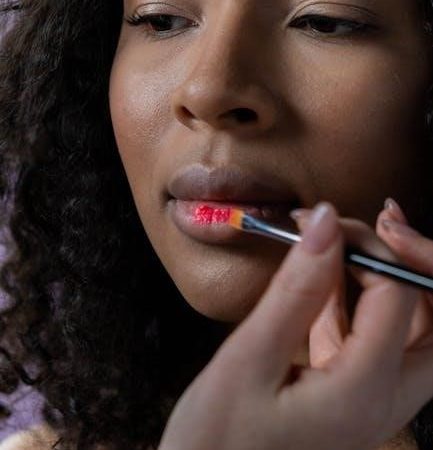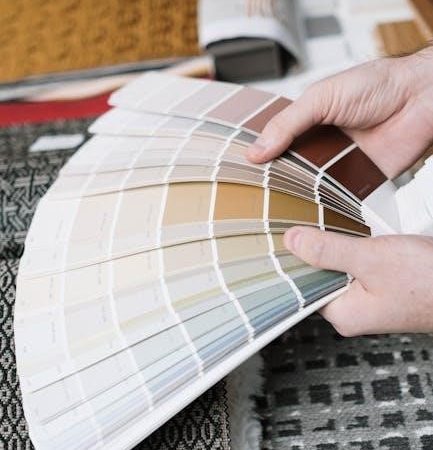blouse measurement guide

Welcome to the blouse measurement guide! Accurate measurements ensure a perfect fit‚ enhancing both comfort and style. Learn how to measure key areas like bust‚ waist‚ and sleeves to find your ideal size effortlessly.
Importance of Accurate Measurements
Accurate measurements are crucial for ensuring a perfect fit in a blouse. Incorrect measurements can lead to clothing that is either too tight or too loose‚ compromising both comfort and style. A well-fitting blouse enhances your appearance and allows for ease of movement. Proper measurements also prevent the need for costly alterations or returns. By taking precise measurements‚ you can confidently compare them to size charts and select the ideal fit. This step is especially important for online shopping‚ where you can’t try garments before purchasing. Remember‚ the goal is to achieve a balance between comfort and flattering silhouette‚ making accurate measurements essential for a seamless shopping experience.
Key Considerations for Choosing the Right Fit
When selecting the right fit for a blouse‚ several factors must be considered. First‚ understand your body type and how different styles complement it. For instance‚ petite frames may benefit from shorter lengths‚ while taller individuals might prefer longer styles. Next‚ consider the fabric type‚ as stretchy materials offer more flexibility than rigid ones. Additionally‚ think about the intended use—whether the blouse is for casual wear‚ work‚ or a special occasion. Personal comfort is also vital; ensure the fit allows for ease of movement without being overly restrictive. Lastly‚ compare your measurements with the size chart provided by the manufacturer‚ keeping in mind that sizes can vary between brands. By addressing these elements‚ you can make informed decisions and achieve a flattering‚ comfortable fit.
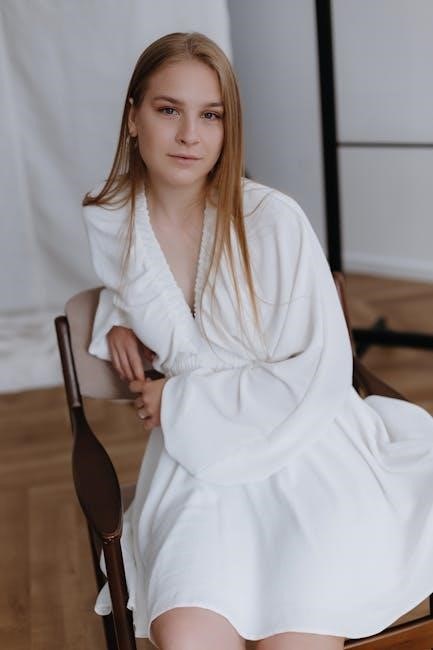
Understanding Basic Body Measurements
Mastering basic body measurements is crucial for a perfect fit. Measure bust‚ waist‚ hips‚ and height to determine your size accurately and ensure comfort in every garment.
Difference Between Body Measurements and Garment Measurements
Body measurements are taken directly from the body‚ focusing on natural dimensions like bust‚ waist‚ and hips. Garment measurements‚ however‚ are taken from the finished item‚ ensuring ease and comfort. While body measurements provide a baseline‚ garment measurements account for factors like fabric stretch and design elements. Understanding this distinction helps in selecting the right size‚ as garment measurements often include ease for a flattering fit. Always compare your body measurements to a garment’s size chart‚ considering any ease added during manufacturing. This ensures the blouse drapes well and offers both comfort and style‚ tailored to your unique physique.
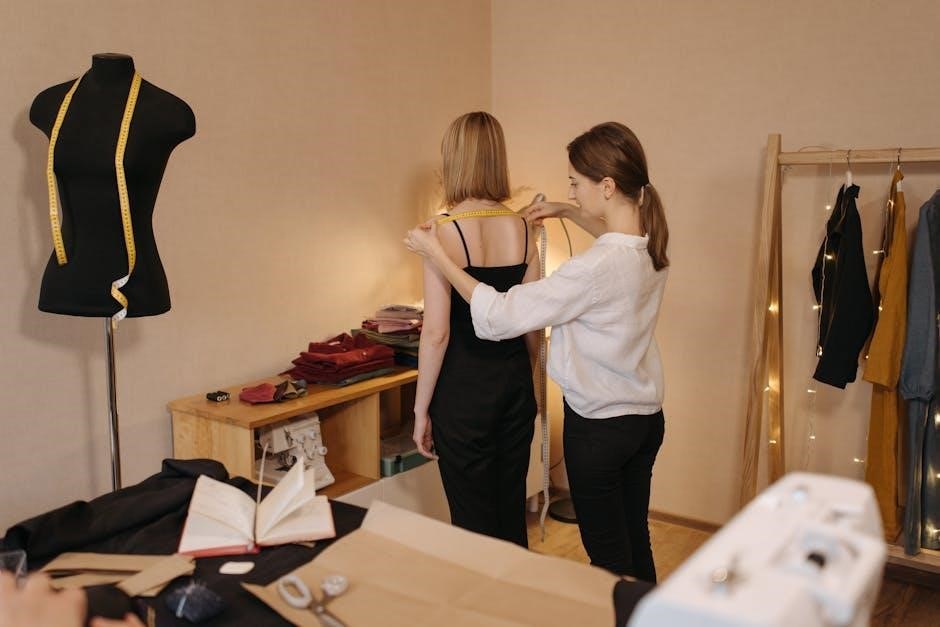
Essential Measurements for a Blouse
Essential measurements include bust‚ waist‚ back length‚ front length‚ shoulders‚ and sleeves. These guide a tailored fit‚ ensuring proper drape and comfort.
Bust Measurement: How to Measure Correctly
To measure your bust accurately‚ wrap the tape around the fullest part of your chest‚ ensuring it is level under your arms and across your shoulder blades. Stand straight with your arms relaxed at your sides. The tape should be snug but not too tight or too loose. If the tape sags or strains‚ adjust it to maintain a consistent fit. Proper positioning is key to ensuring the measurement reflects your true size. This step is crucial for determining the right blouse size‚ as it directly impacts the fit and comfort. Keep the tape horizontal and avoid twisting it for accurate results. Remember‚ the goal is to capture your natural shape for a flattering and comfortable fit in your blouse.
Waist Measurement: Defining Your Natural Waistline
Your natural waistline is typically located just above your belly button and is the narrowest part of your torso. To measure it accurately‚ stand straight and wrap the tape measure around your waist‚ keeping it level and parallel to the floor. The tape should be snug but not too tight or too loose‚ allowing for a small finger to fit comfortably underneath. This measurement is crucial for determining the fit of your blouse‚ especially if it is tailored or designed to accentuate the waist. Proper alignment ensures the blouse sits comfortably and flatters your silhouette. For the most accurate results‚ avoid slouching or holding your breath while measuring. This step helps create a balanced fit‚ pairing perfectly with your bust and hip measurements for a polished look.
Length Measurement: Back and Front Length Explained
Measuring the length of your blouse ensures it fits perfectly‚ whether you prefer a cropped style or a longer‚ more relaxed look. The back length is measured from the base of the neck at the center back down to the desired hip level. For the front length‚ measure from the shoulder‚ just below the neckline‚ straight down to the point where you want the blouse to end‚ typically aligning with the waistline or slightly below; Use a mirror to ensure accuracy and keep the tape measure straight. Proper alignment is key to achieving the desired fit. Avoid slouching or tilting your head‚ as this can skew the measurement. Accurate length measurements ensure the blouse drapes flattering on your body‚ complementing your silhouette and personal style. This step is especially important for tailored or semi-fitted designs.
Shoulder Measurement: Ensuring Proper Fit
Accurate shoulder measurements are crucial for a well-fitted blouse‚ as they determine how the garment sits on your body. To measure your shoulders‚ stand straight and place the tape measure across the back of your shoulders‚ starting and ending at the tips of your shoulder blades. This measurement helps ensure the blouse’s seams align correctly with your body. Proper shoulder fit prevents the garment from slipping off or feeling too tight. If the shoulders are too narrow‚ the blouse may restrict movement‚ while overly broad shoulders can make the top look boxy. Ensure the tape is level and not pulled too tight or left too loose for the most accurate result. This measurement is essential for achieving a balanced and comfortable fit‚ making it a key step in your blouse measurement process.
Sleeve Length Measurement: From Shoulder to Desired End Point
Measuring sleeve length ensures your blouse fits perfectly from shoulder to cuff. Start by placing the tape measure at the tip of your shoulder‚ just above the arm‚ and extend it down to your desired sleeve length endpoint‚ such as your wrist or just above the hip for shorter sleeves. For accuracy‚ keep your arm slightly bent and the tape measure taut but not too tight. This measurement is crucial for comfort and style‚ as sleeves that are too short or too long can disrupt the overall fit. If you prefer a more relaxed fit‚ add a little ease to your measurement. Compare this measurement to a size chart to find your ideal sleeve length‚ ensuring a flattering and functional fit for your blouse.
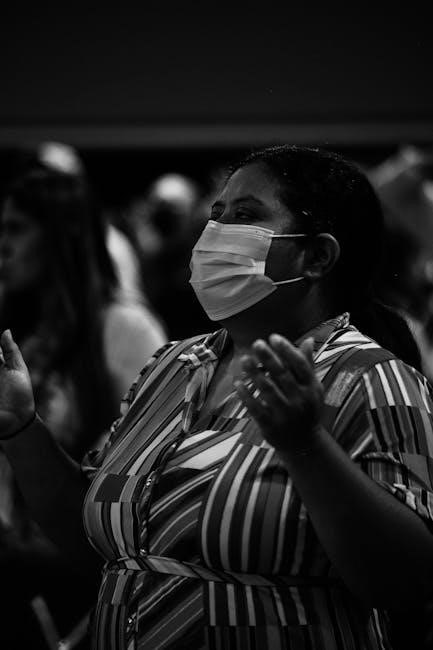
How to Take Your Own Measurements
To take your own measurements‚ use a flexible tape measure. Stand straight‚ keep the tape snug‚ and wrap it around your back and across your chest for an accurate fit.
Step-by-Step Guide for Self-Measurement
Measure yourself accurately by following these steps: Stand upright with your arms relaxed. Use a flexible tape measure and ensure it’s snug but not too tight. Start with your chest: wrap the tape around the fullest part‚ keeping it level under your arms. Next‚ measure your natural waistline‚ typically just above your belly button. For shoulders‚ measure from one shoulder tip to the other. Sleeve length is measured from your shoulder to your desired cuff length. Lastly‚ measure the back length from your shoulder to your hip level. Use a mirror to check the tape’s position and take notes. For best results‚ repeat measurements to ensure consistency and accuracy.
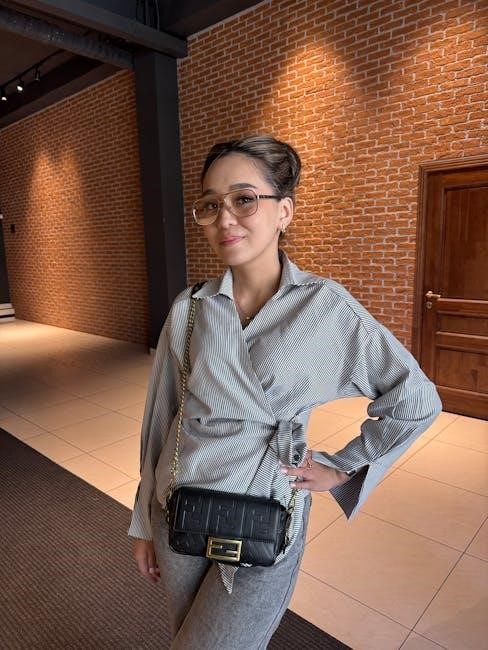
Comparing Measurements to a Size Chart
Once you’ve taken your measurements‚ the next step is to compare them to a size chart. Start by matching your chest‚ waist‚ and sleeve measurements to the corresponding sizes. Ensure the tape measure is snug but not tight‚ as this can affect accuracy. Use the size chart provided by the brand or retailer‚ as sizes may vary slightly between brands. If your measurements fall between two sizes‚ consider your personal preference for fit—slimmer or more relaxed. For example‚ if your chest measurement aligns with a medium but your waist matches a large‚ opt for the size that offers the best overall fit. Always double-check your measurements for accuracy and consult the size chart specific to the garment or brand you’re purchasing from.
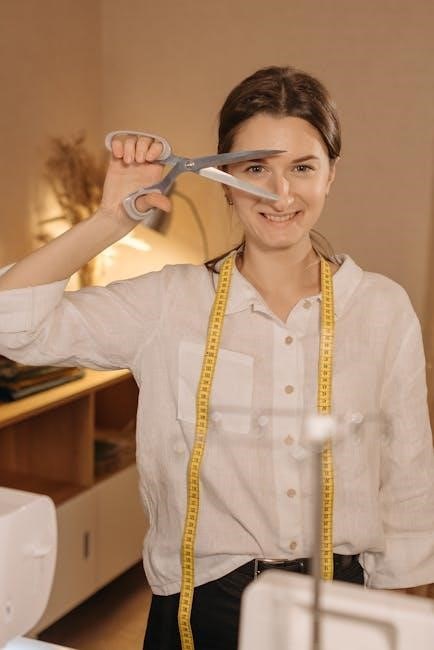
Sleeve Length: How to Measure for the Perfect Fit
Measuring sleeve length ensures your blouse fits perfectly from shoulder to cuff. Stand straight with your arm relaxed at your side. Place the measuring tape at the base of your shoulder‚ just above the shoulder blade‚ and run it down the outside of your arm to your wrist. For a standard sleeve‚ the tape should extend just past your wrist bone. If you prefer a shorter or longer sleeve‚ adjust the endpoint accordingly. Keep the tape snug but not tight‚ as this can distort the measurement. Compare your measurement to the size chart to find the ideal fit. Accurate sleeve length ensures comfort and style‚ whether you’re looking for a casual or formal blouse. Always double-check your measurements for consistency and accuracy.

Understanding Fit and Ease in Clothing
Fit and ease are crucial for a comfortable and flattering blouse. Fit refers to how a garment sits on your body‚ while ease is the extra space built into the design for movement and comfort. A good fit balances style and practicality‚ ensuring the blouse isn’t too tight or too loose. Ease varies depending on the design‚ with formal blouses often having less ease than casual styles. To achieve the perfect fit‚ compare your measurements to the size chart‚ considering the ease included in the garment’s construction. Proper ease ensures you can move freely without restriction‚ while maintaining the desired silhouette. Understanding fit and ease helps you choose a blouse that looks great and feels wonderful to wear. Always check the size chart and garment measurements to ensure the best fit for your body type and personal style preferences.
Measuring a Garment for Comparison
To ensure the best fit‚ measuring a garment you already own and comparing it to the size chart is highly effective. Lay the garment flat on a smooth surface‚ smoothing out any wrinkles. Measure across the chest‚ waist‚ and sleeve length‚ comparing these dimensions to the size chart of the blouse you wish to purchase. This method helps you determine the closest match to your favorite piece of clothing. For accurate results‚ use a flexible measuring tape and ensure the garment is not stretched or pulled tight during measurement. By comparing these measurements‚ you can confidently select the correct size and enjoy a comfortable‚ well-fitting blouse. This step is especially useful when shopping online or trying a new brand‚ as it helps bridge the gap between personal fit preferences and standardized sizing.
Common Mistakes to Avoid When Measuring
When measuring for a blouse‚ avoiding common mistakes ensures accuracy and the best fit. One of the most frequent errors is not keeping the measuring tape level or allowing it to sag‚ which can lead to incorrect sizing. Another mistake is measuring over bulky clothing‚ as this can distort the readings. Additionally‚ neglecting to measure at the natural points‚ such as the fullest part of the bust or the narrowest part of the waist‚ can result in poor fit. Many people also fail to take multiple measurements to confirm accuracy. Lastly‚ rushing the process or not comparing measurements to a size chart often leads to sizing errors. By being mindful of these pitfalls‚ you can ensure precise measurements and a flattering‚ comfortable fit for your blouse.
Mastering the art of blouse measurement is key to achieving a flawless fit. By understanding how to accurately measure your bust‚ waist‚ shoulders‚ and sleeves‚ you can confidently select the right size and enjoy a garment that flatters your figure. Remember‚ precise measurements are the foundation of a perfect fit‚ ensuring both comfort and style. Avoid common mistakes like slouching or using loose measuring tapes‚ and always compare your measurements to a size chart. With practice‚ taking your measurements becomes second nature‚ allowing you to shop with confidence or tailor garments to your exact needs. Whether you’re purchasing ready-to-wear or creating custom pieces‚ this guide provides the tools to ensure your blouses fit beautifully every time. Happy measuring and enjoy the perfect fit!
